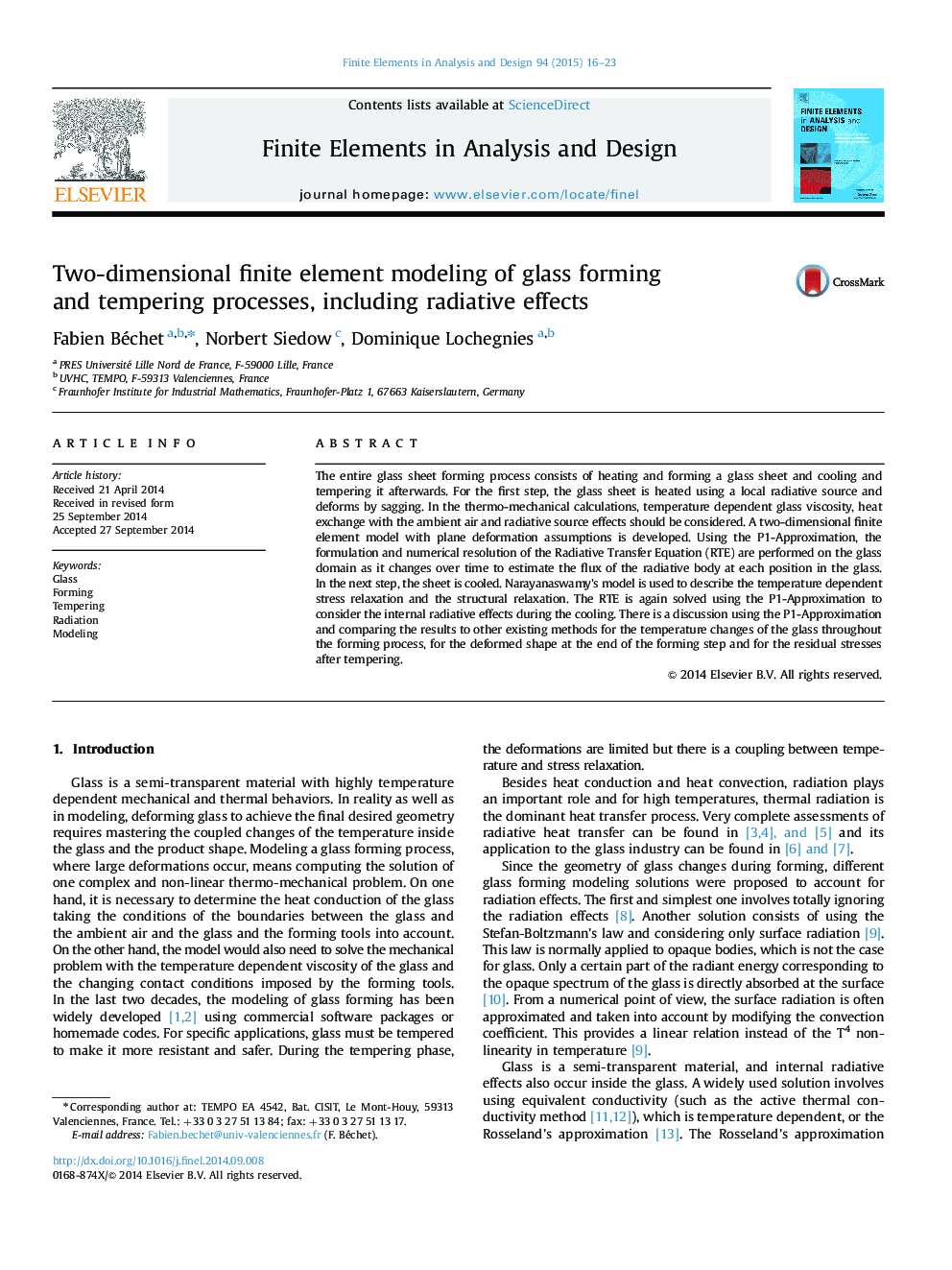| Article ID | Journal | Published Year | Pages | File Type |
|---|---|---|---|---|
| 6925603 | Finite Elements in Analysis and Design | 2015 | 8 Pages |
Abstract
The entire glass sheet forming process consists of heating and forming a glass sheet and cooling and tempering it afterwards. For the first step, the glass sheet is heated using a local radiative source and deforms by sagging. In the thermo-mechanical calculations, temperature dependent glass viscosity, heat exchange with the ambient air and radiative source effects should be considered. A two-dimensional finite element model with plane deformation assumptions is developed. Using the P1-Approximation, the formulation and numerical resolution of the Radiative Transfer Equation (RTE) are performed on the glass domain as it changes over time to estimate the flux of the radiative body at each position in the glass. In the next step, the sheet is cooled. Narayanaswamy׳s model is used to describe the temperature dependent stress relaxation and the structural relaxation. The RTE is again solved using the P1-Approximation to consider the internal radiative effects during the cooling. There is a discussion using the P1-Approximation and comparing the results to other existing methods for the temperature changes of the glass throughout the forming process, for the deformed shape at the end of the forming step and for the residual stresses after tempering.
Related Topics
Physical Sciences and Engineering
Computer Science
Computer Science Applications
Authors
Fabien Béchet, Norbert Siedow, Dominique Lochegnies,
